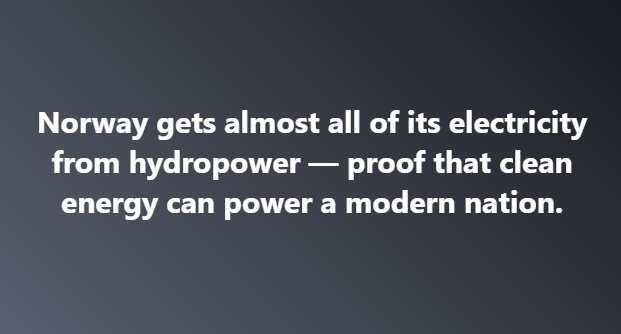Sustainable Transportation
Introduction Sustainable Transportation in Amsterdam
Amsterdam, the capital city of the Netherlands, stands as a shining example of sustainable transportation and progressive urban mobility.
Known for its iconic canals, cycling culture, and innovative initiatives, Amsterdam has successfully built a transportation system that prioritizes sustainable modes of travel, reduces congestion, and promotes a greener environment.
In this article, we will delve into the key features that make Amsterdam a global leader in sustainable transportation and explore how its strategies can inspire other cities to create more eco-friendly and people-centric mobility solutions.
1. Cycling Paradigm and Infrastructure
Amsterdam’s cycling culture is legendary, with bicycles serving as the backbone of the city’s transportation system. A vast network of cycling paths, totaling over 500 kilometers, crisscrosses the city, allowing residents and visitors to conveniently navigate Amsterdam on two wheels.
The city continuously invests in cycling infrastructure, creating separated bike lanes, bike-friendly intersections, and secure parking facilities. The result is a safe, efficient, and enjoyable cycling experience that encourages a significant portion of the population to choose bicycles as their primary mode of transportation.
2. Extensive Public Transport Network
Amsterdam boasts an extensive and well-connected public transport network, providing residents with convenient alternatives to private cars. The system includes trams, buses, metros, and ferries, seamlessly integrating various modes of public transport. Travelers benefit from reliable schedules, efficient routes, and smart ticketing systems.
The city actively encourages the use of public transport by implementing initiatives such as contactless payment methods, real-time travel information, and integrated ticketing options. Amsterdam’s commitment to an expansive public transport network significantly reduces traffic congestion and contributes to a cleaner urban environment.
3. Car-Free City Center and Traffic Management
In a bold move to prioritize pedestrians, cyclists, and public transport, Amsterdam has implemented a car-free policy in its city center. Private vehicles are largely restricted from entering the core area, ensuring a safer and more enjoyable environment for pedestrians and cyclists.
This approach has transformed the city center into a vibrant, people-friendly space with reduced noise and pollution levels. Additionally, Amsterdam utilizes intelligent traffic management systems, including adaptive traffic lights and real-time traffic flow monitoring, to optimize traffic patterns and improve overall efficiency.
4. Electrification and Shared Mobility Solutions
Amsterdam has been at the forefront of the electric mobility revolution. The city has made significant strides in electrifying its transportation fleet, with electric buses, taxis, and even boats now plying its waterways. Charging infrastructure is widely available, making electric vehicles a practical choice for residents and businesses.
Furthermore, Amsterdam actively promotes shared mobility solutions, including car-sharing programs and shared electric scooters, to reduce the number of private vehicles on the road, decrease emissions, and optimize resource utilization.
5. Innovation and Smart Solutions
As a hub of innovation, Amsterdam embraces technology and smart solutions to enhance its transportation system. Intelligent transportation systems, such as traffic management apps, smart parking systems, and data-driven mobility solutions, contribute to smoother traffic flow, improved accessibility, and enhanced user experience.
Amsterdam’s commitment to innovation fosters a dynamic environment where startups, research institutions, and the public sector collaborate to develop cutting-edge solutions for sustainable transportation.
Public Transport Network in Amsterdam
Amsterdam has an extensive public transport network that includes trams, buses, and metro services. The city’s public transport is operated by GVB (Municipal Transport Company Amsterdam) and it connects various neighborhoods and districts.
Trams: Amsterdam has an extensive tram network with numerous lines that cover the city center and outer areas. Trams are a popular mode of transportation for both locals and tourists.
Buses: The city’s bus network complements the tram lines and covers areas not served by the tram system. It provides convenient transportation to different parts of Amsterdam.
Metro: Amsterdam has a metro system with four lines (M50, M51, M52, M53) that connect the central area to the suburbs.
Ferries: The city also has free ferries that transport pedestrians and cyclists across the IJ river, connecting the city center to Amsterdam Noord.
Amsterdam’s sustainable transportation
Amsterdam’s sustainable transportation initiatives have positioned it as a global leader in urban mobility. By prioritizing cycling, expanding its public transport network, creating car-free zones, embracing electric mobility, and leveraging innovative solutions, the city has successfully transformed its transportation landscape, enhancing livability and reducing environmental impact.
Amsterdam serves as an inspiration for other cities striving to build sustainable transportation systems. By adopting similar strategies and tailoring them to their unique contexts, cities can work towards reducing congestion, improving air quality, and fostering more people-centric urban environments.
Amsterdam’s dedication to sustainable transportation demonstrates that with the right vision, investment, and community engagement, cities can achieve a greener and more efficient future.
Amsterdam’s success story holds valuable lessons for other cities seeking to replicate its sustainable transportation model:
1. Embrace Cycling Culture: Amsterdam’s commitment to cycling as a primary mode of transportation has had a profound impact on its urban mobility. Other cities can learn from Amsterdam’s investment in cycling infrastructure, including dedicated bike lanes, traffic-calming measures, and secure bike parking facilities. Encouraging and incentivizing residents to cycle not only reduces traffic congestion but also promotes active lifestyles and improves public health.
2. Prioritize Public Transport: A well-connected and efficient public transport system is essential for reducing private car usage. Cities can follow Amsterdam’s example by investing in comprehensive public transport networks that offer reliable, frequent services and seamless connections. Embracing modern technologies like contactless payments, real-time travel information, and integrated ticketing systems enhances the user experience and encourages greater public transport adoption.
3. Restrict Car Access: Implementing car-free zones or congestion pricing schemes in city centers can significantly reduce traffic congestion and air pollution. Amsterdam’s car-free city center has not only improved air quality but also transformed the urban landscape into a pedestrian-friendly and vibrant space. By prioritizing pedestrians, cyclists, and public transport, cities can create safer and more sustainable urban environments.
4. Promote Electrification: The shift toward electric vehicles (EVs) is a crucial component of sustainable transportation. Amsterdam’s commitment to electrifying its transportation fleet and providing adequate charging infrastructure sets an example for other cities. Governments and local authorities can incentivize EV adoption through subsidies, tax benefits, and the installation of charging stations, making electric mobility an attractive and viable option for residents and businesses.
5. Foster Innovation and Collaboration: Amsterdam’s innovative spirit and collaboration among stakeholders have been instrumental in its sustainable transportation success. Cities can establish partnerships with academia, businesses, and the community to develop and implement smart solutions that optimize traffic management, enhance user experience, and improve overall efficiency. Embracing emerging technologies and data-driven approaches can help cities overcome transportation challenges and drive sustainable mobility forward.
As cities worldwide grapple with the need for sustainable transportation, Amsterdam’s experiences offer valuable insights and inspiration. By integrating elements such as cycling infrastructure, robust public transport systems, car-free initiatives, electric mobility, and innovative solutions, cities can create a more sustainable, livable, and inclusive future.
Amsterdam serves as a testament to the transformative power of sustainable transportation and demonstrates that with the right strategies and collective efforts, cities can pave the way toward a greener and more resilient urban landscape.
https://www.exaputra.com/2023/08/pioneering-sustainable-transportation.html
Renewable Energy
Why Norway Is a World Leader in Renewables
 It’s true that Norway is a world leader in renewable energy. To be fair, however, they have a few things going for them.
It’s true that Norway is a world leader in renewable energy. To be fair, however, they have a few things going for them.
One is the hydro resource itself, which is enormous, especially considering nation’s small population.
The other, and it’s just as important, is the fact that Norway really wants to remove fossil fuels from its grid-mix. They sport of extremely enlightened people who actually care about the welfare of the people in the world around them
Renewable Energy
What Can Trump Destroy?
 In other posts, we’ve looked at the prospects of a massive refusal on the part of America’s top military to follow a manifestly illegal order, like invading Canada.
In other posts, we’ve looked at the prospects of a massive refusal on the part of America’s top military to follow a manifestly illegal order, like invading Canada.
What about a less dramatic case? What if I were the chief White House superintendent and Trump told me to bulldoze the East Wing? I’d say, “Sorry, I resign as of this minute. You may find someone who will destroy a national treasure, but it’s sure as hell isn’t going to be me.”
Renewable Energy
Is the System Rigged?
If I were writing the piece at left, I wouldn’t say, “the system is rigged,” because that implies some clandestine.
I would saw the system is designed to make rich people richer, and to ignore the needs of the masses. It’s working exactly as it’s designed to.
Now it’s true that all this is more obvious now than it was 50 years ago when the average American came out of college and got an office job that enabled him to earn a living wage.
-
Climate Change2 years ago
Spanish-language misinformation on renewable energy spreads online, report shows
-
Climate Change3 months ago
Guest post: Why China is still building new coal – and when it might stop
-
Climate Change Videos2 years ago
The toxic gas flares fuelling Nigeria’s climate change – BBC News
-

 Greenhouse Gases1 year ago
Greenhouse Gases1 year ago嘉宾来稿:满足中国增长的用电需求 光伏加储能“比新建煤电更实惠”
-
Greenhouse Gases3 months ago
Guest post: Why China is still building new coal – and when it might stop
-

 Climate Change1 year ago
Climate Change1 year ago嘉宾来稿:满足中国增长的用电需求 光伏加储能“比新建煤电更实惠”
-

 Carbon Footprint2 years ago
Carbon Footprint2 years agoUS SEC’s Climate Disclosure Rules Spur Renewed Interest in Carbon Credits
-
Renewable Energy4 months ago
US Grid Strain, Possible Allete Sale






